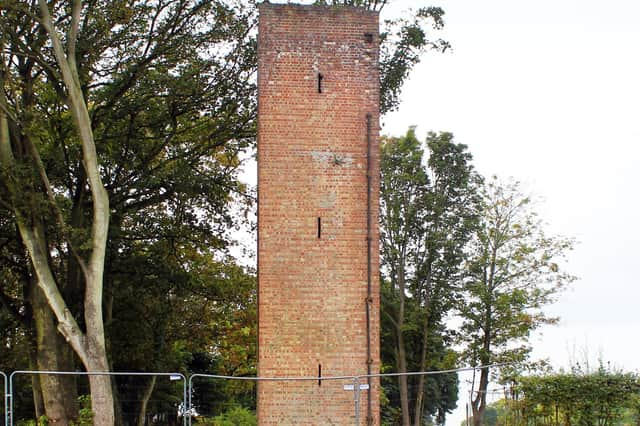Rare Second World War command post in Hucknall now a listed building to celebrate VE Day


The battle headquarters at the former RAF Hucknall is a very unusual example of a locally-designed command post, which was built in 1940 to help defend the airfield against wartime paratrooper assaults.
Germany had begun to capture military airfields as part of their invasion and occupation plans for Europe.
Advertisement
Hide AdAdvertisement
Hide AdBattle headquarters were built on the highest nearby ground to give a clear view of the landing ground in anticipation of any such attacks.
The battle headquarters at Hucknall was built as an underground command post with a visible three-storey brick tower.
The tower has observation slits to each floor and a rooftop gun emplacement that would have provided clear sightlines towards approaching enemy aircraft.
If the airfield was at risk of attack, a lookout would sound the alarm to warn personnel to take cover in air raid shelters.
Advertisement
Hide AdAdvertisement
Hide AdIn the dugout below, the station defence commander would monitor the development of an attack from the battle headquarters and mobilise the defence force.
Heritage minister, Nigel Huddleston, said: "We owe the Second World War generation an enormous debt of gratitude.
“I am delighted that, as we prepare to mark 75 years since the end of the war in Europe on Friday, May 8, we are protecting historic sites in this way."
During 1940, battle headquarters were built at hundreds of airfields across the country to ad hoc designs.
Advertisement
Hide AdAdvertisement
Hide AdVery few of the earlier designs, like that at RAF Hucknall, survive and none other is known to stand more than a single storey in height.
Duncan Wilson, chief executive of Historic England, said: “Victory in Europe on May 8, 1945 was celebrated with a combination of euphoria and relief across England.
“The surviving physical evidence of the Second World War is all around us, but is often unrecognised.
“From the battle headquarters at RAF Hucknall airfield to the thousands of homes that sheltered evacuees, we must ensure that the rich history of these iconic sites is not forgotten.”
A message from the Editor:
Advertisement
Hide AdAdvertisement
Hide AdThank you for reading this story on our website. While I have your attention, I also have an important request to make of you.
In order for us to continue to provide high quality and trusted local news on this free-to-read site, I am asking you to also please purchase a copy of our newspaper.
Our journalists are highly trained and our content is independently regulated by IPSO to some of the most rigorous standards in the world. But being your eyes and ears comes at a price. So we need your support more than ever to buy our newspapers during this crisis.
With the coronavirus lockdown having a major impact on many of our local valued advertisers - and consequently the advertising that we receive - we are more reliant than ever on you helping us to provide you with news and information by buying a copy of our newspaper.
Thank you
Nancy Fielder, editor